Tipping culture in the US, while customary, can often be seen as inconvenient due to its ambiguity and non-budget-friendly cost. A woman highlighted the issue but also sparked controversy in the process after explaining why she didn’t tip her hairdresser.
Justice, a personal trainer from Chicago, USA, stirred up some heated debates about tipping when she admitted that she hadn’t offered an extra gratuity to her hairdresser after paying $350 for a seven-and-a-half-hour job.
“I did not tip the girl who did my braids yesterday, and this is the first time I haven’t tipped to get my hair done,” Justice said.
She added: “I was fuelled with anxiety, especially when I handed her over the cash, and she started counting it.”
Justice sparked controversy after explaining why she didn’t tip her hairdresser
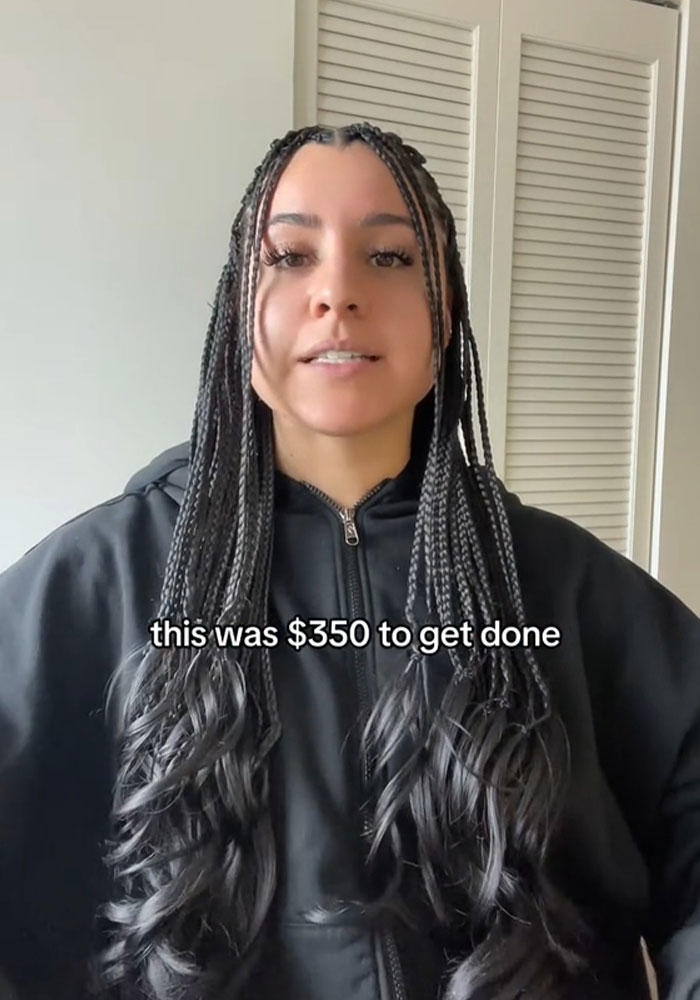
The personal trainer had gone to her hairdresser’s home to get small knotless French curl braids, a type of hair braiding technique that involves creating small, tightly woven braids without using knots at the base.
These braids typically start small at the roots and gradually taper off into curls or waves towards the ends, giving a natural and textured look. The French curl aspect refers to the curl or wave pattern incorporated into the braids, adding dimension and style to the finished hairstyle.
Safe to say that the hairstyle takes a lot of labor to create, but Justice argued that while her hairstylist had taken half a day on her hairdo, the total cost made for a rather profitable wage.
According to Justice, $350 for a seven-and-a-half-hour job averages out to $46 an hour, “minus the cost of hair.” As a result, the personal trainer estimated an approximate salary of $40 an hour.
Justice, a personal trainer from Chicago, USA, paid her hairdresser $350 for a seven-and-a-half-hour job
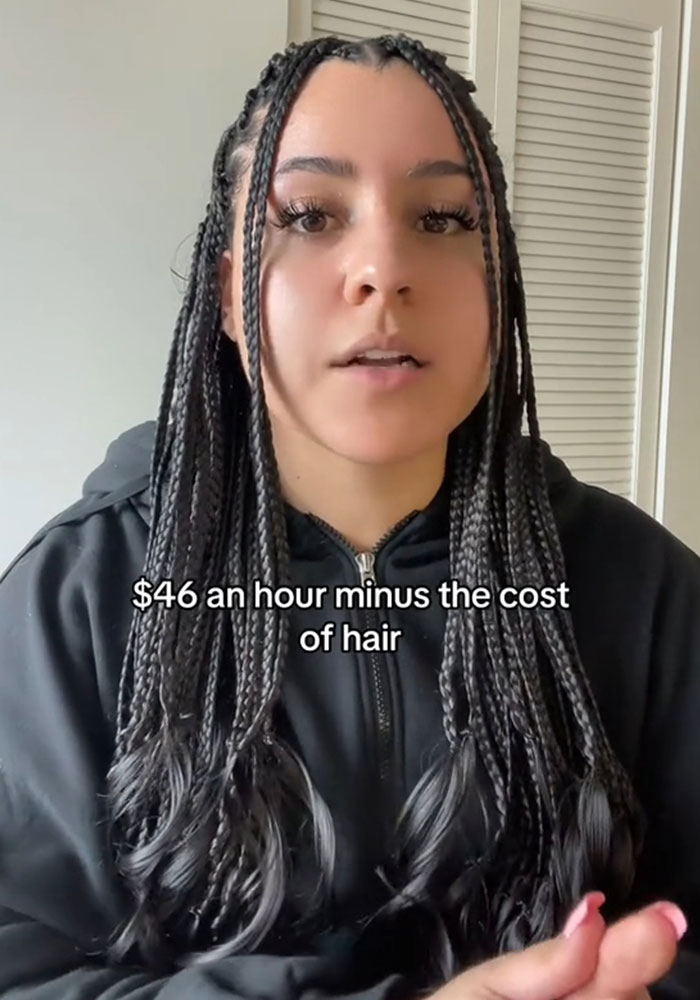
“I think that that’s a really good price. How many people are making $40 an hour,” Justice asked viewers after documenting her testimony in a video she uploaded on her TikTok account.
Justice further argued that the hairdresser didn’t have to commute nor pay any “extra overhead because she works from home.”
The content creator added that she had to go to the ATM, which she described as “the most inconvenient method of payment,” as well as wash, condition, and blow dry her hair before commuting to her hairstylist.
“This is no tea, no shade, no nothing,” Justice reassured, as she even admitted that her hairdresser had been the “best braider” she’d ever had and that she would “definitely go back to her.”
The personal trainer had gone to her hairdresser’s home to get small knotless French curl braids
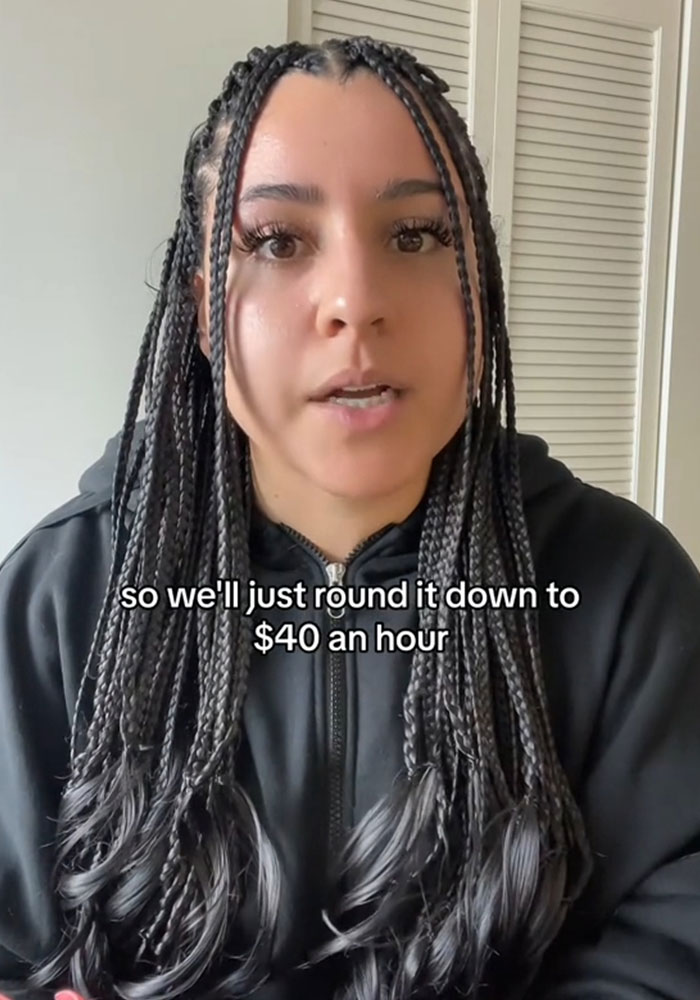
Justice went on to conclude that although some people may think that tipping is “the way to say thank you,” according to her, the best way to thank someone’s hard work is to be respectful and spread good words about them, such as promoting their business on social media.
Her video, which amassed 4.6 million views since it was posted on Sunday (February 11), ignited backlash, with a handful of people slamming the fact that she hadn’t tipped.
Nevertheless, many other viewers echoed Justice’s views, as a person commented: “I’m so sick of tipping.
“I ordered a pizza to pick up, and the receipt at checkout asked for a tip. For what? I’m picking it up.”
The hair braiding technique involves creating small, tightly woven braids without using knots at the base
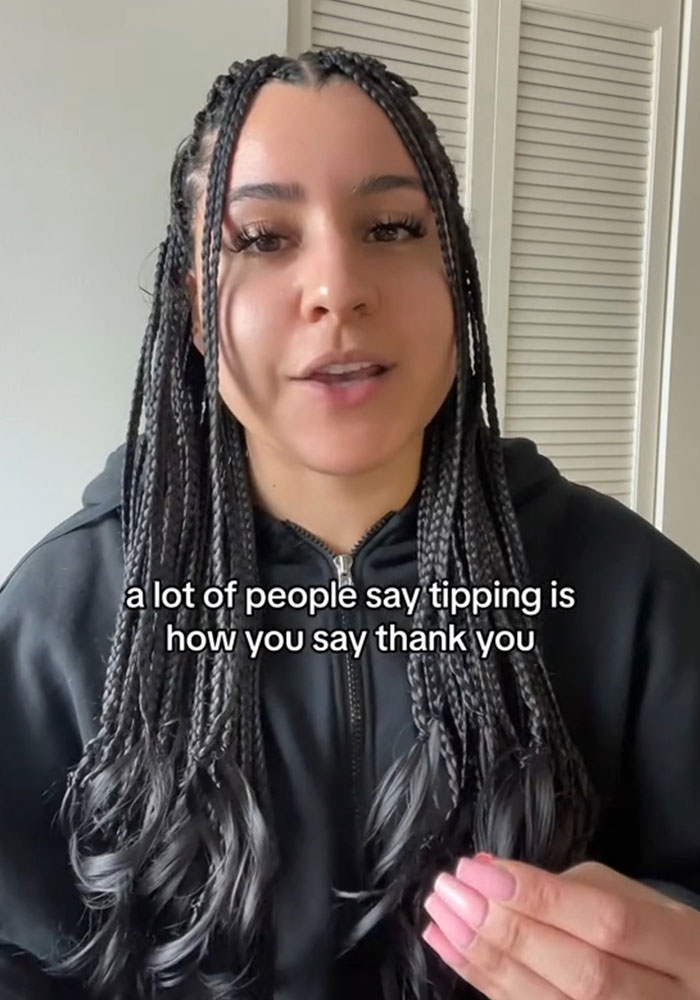
Another TikTok user wrote: “I purposely set my prices for what I need to live and tell everyone tipping is not necessary. The best tip is just to come back [and] tell your friends.”
An additional commentator penned: “I’m from the UK and find [that] the tipping in the USA is wild.”
Someone else added: “I’m no longer tipping on my nails. They rush no more basic nail care and complain if I want an add-on design or shape.”
A separate individual chimed in: “Yeah, I’m with you. I’m not tipping for hair or nails anymore.
Justice argued that whilst her hairstylist had taken half a day on her hairdo, the total cost made for a rather profitable wage
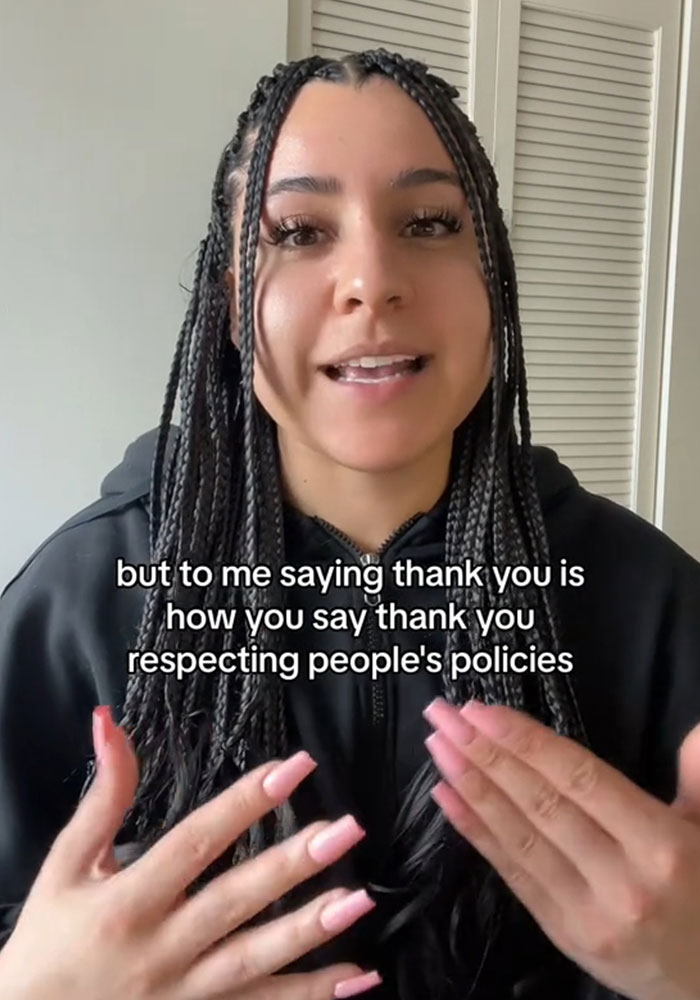
“Their price keeps climbing, and half the time, they are late.”
Tipping culture in the US has gotten out of control, columnist Arwa Mahdawi wrote for The Guardian in August 2023.
“The US norm of tipping at least 20% on a meal, and at (the very, very) least $1 a drink at a bar, has always confused European tourists,” Arwa noted.
The writer argued that in recent years, tipping prompts have become so ubiquitous that even Americans are confused about when and where a tip is appropriate.
You can watch her viral TikTok below:
@antidietpilot♬ original sound – Justice
“There is now almost no payment transaction in the US that doesn’t involve a prompt for a tip,” Arwa wrote as she highlighted the fact that if you go to get a coffee or pick up a takeout order, for example, an electronic screen will almost certainly get swiveled in your direction, asking if you want to add a 20%, 25%, or 30% tip.
“The constant nudging for tips at every interaction feels intrusive and stressful,” Arwa admitted.
She further pondered: “Are we really expected to give a minimum 20% tip when we pick up some bread from the bakery or grab a vanilla cone from the ice cream shop?”
The Emily Post Institute, which offers guidelines on etiquette, advises that tipping in a sit-down restaurant is expected. But faced with a tip jar or the technology that replaces that, customers should consider tipping to be discretionary.
“I see that situation as no different as to whether you’re going to pocket your change or put it in the tip jar,” Lizzie Post, the great-great-granddaughter of Emily Post and the institute’s co-president told The New York Times in April 2022.
Whilst some people disagreed with her, Justice was also praised for her opinions on tipping



















